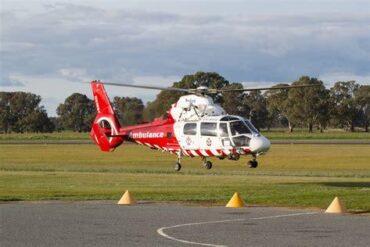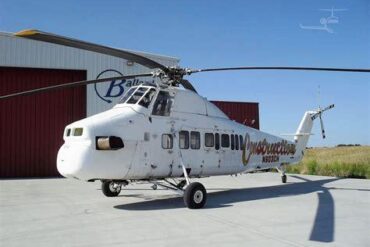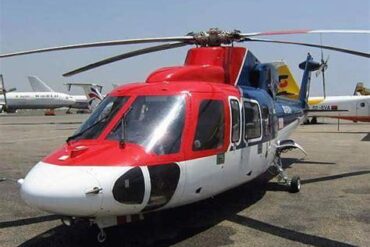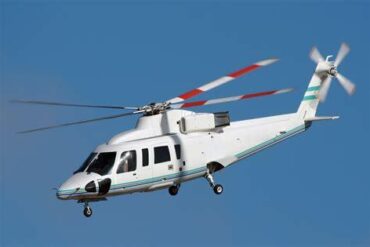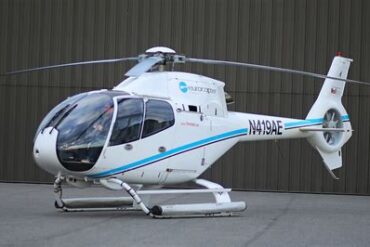The Sikorsky S-61N, a versatile helicopter renowned for its robust design and impressive performance, has carved a significant niche in the aviation industry. As potential operators consider this aircraft for various missions, understanding the price and operating costs becomes essential for informed decision-making. This article delves into the specifics of acquiring and operating the Sikorsky S-61N, ensuring that all aspects are thoroughly covered for prospective buyers and operators.
Overview of the Sikorsky S-61N
The Sikorsky S-61N is a medium-lift helicopter that has been in service since its introduction in the 1960s. It was designed primarily for offshore oil transport, search and rescue operations, and utility missions. The S-61N boasts a distinctive twin-engine configuration, offering enhanced safety and performance in various operational conditions.
Key Specifications
Before diving into pricing and operating costs, it’s important to highlight the key specifications of the Sikorsky S-61N:
-
Crew Capacity: 2 pilots and up to 16 passengers
-
Length: Approximately 65 feet 8 inches (20.02 m)
-
Rotor Diameter: 54 feet (16.46 m)
-
Maximum Takeoff Weight: 14,000 pounds (6,350 kg)
-
Cruise Speed: 130 knots (150 mph or 241 km/h)
-
Range: 400 nautical miles (740 km)
These specifications underscore the helicopter’s capability to perform a variety of missions effectively and efficiently.
Purchase Price of the Sikorsky S-61N
Acquiring a Sikorsky S-61N involves significant investment, influenced by factors such as aircraft condition, year of manufacture, and included modifications. On average, the purchase price for a used S-61N ranges from $1.5 million to $3 million. Several factors can influence the final purchase price:
1. Age and Condition of the Aircraft
The age of the Sikorsky S-61N is a critical factor in determining its price. Older models may be available at lower prices, but they may require more extensive maintenance and upgrades to meet current safety and operational standards. Aircraft condition, including the status of airframe and engine hours, directly impacts its valuation.
2. Modifications and Customizations
Sikorsky S-61Ns can be customized for specific missions, and these modifications can significantly influence the price. Common upgrades include:
-
Avionics upgrades for enhanced navigation and communication capabilities.
-
Increased passenger capacity through interior modifications.
-
Cargo hooks for utility missions.
These enhancements not only improve operational efficiency but can also increase the overall cost of the helicopter.
3. Market Demand
The market demand for the Sikorsky S-61N fluctuates based on economic conditions, industry needs, and competition from other helicopter models. During periods of high demand, prices may rise, while an oversupply can lead to reduced costs. Understanding the current market landscape is essential for making a smart purchasing decision.
Operating Costs of the Sikorsky S-61N
Operating a Sikorsky S-61N comes with various costs that operators must consider for budgeting and financial planning. The primary operating costs include:
1. Fuel Costs
The Sikorsky S-61N is powered by twin Turbomeca Astazou engines, which provide reliable performance but also require significant fuel consumption. On average, the helicopter consumes approximately 500 pounds of fuel per hour. Given current fuel prices, operators can expect fuel costs to range from $1,200 to $1,500 per flight hour, depending on fuel prices and operational efficiency.
2. Maintenance Costs
Regular maintenance is crucial to ensure the safe operation of the Sikorsky S-61N. Maintenance costs can be categorized into scheduled and unscheduled maintenance:
-
Scheduled Maintenance: This includes routine inspections and replacements according to the manufacturer’s guidelines. The cost can average around $400 to $600 per flight hour, depending on maintenance programs and specific aircraft conditions.
-
Unscheduled Maintenance: Unexpected repairs can arise due to wear and tear or component failures. Operators should budget for an additional 10-20% of their scheduled maintenance costs to account for these unforeseen expenses.
3. Crew Costs
Employing a skilled crew is essential for the safe and effective operation of the Sikorsky S-61N. Crew costs typically include salaries, benefits, and training expenses. On average, operators can expect to pay:
-
Pilot Salary: $80,000 to $120,000 annually per pilot.
-
Crew Training: Initial and recurrent training costs can range from $10,000 to $15,000 per pilot annually, depending on certification and training provider.
4. Insurance Costs
Insurance is another crucial aspect of operating a Sikorsky S-61N. The cost of insurance can vary widely based on factors such as:
-
Flight hours and operational history.
-
Geographic region and mission profile.
On average, insurance costs can range from $20,000 to $50,000 annually, depending on coverage levels and operator experience.
5. Hangar and Ground Support Costs
Storing the Sikorsky S-61N and ensuring it has the necessary ground support services incurs additional costs. Hangar rental rates depend on location but typically range from $1,000 to $3,000 per month. Ground support services, including fueling, maintenance, and cleaning, can add another $300 to $500 per flight hour.
Cost Summary Table
| Cost Category | Estimated Cost |
|---|---|
| Fuel Costs | $1,200 – $1,500 per flight hour |
| Scheduled Maintenance | $400 – $600 per flight hour |
| Unscheduled Maintenance | +10-20% of scheduled costs |
| Pilot Salary | $80,000 – $120,000 annually |
| Crew Training | $10,000 – $15,000 per pilot annually |
| Insurance | $20,000 – $50,000 annually |
| Hangar Rental | $1,000 – $3,000 per month |
| Ground Support | $300 – $500 per flight hour |
Financial Considerations for Operators
Understanding the full scope of costs associated with the Sikorsky S-61N allows operators to make informed financial decisions. Here are several financial considerations:
1. Budgeting for Operational Expenses
It is critical for operators to create a comprehensive budget that accounts for all operational costs. By estimating both fixed and variable costs, operators can avoid financial strain and maintain effective budgeting practices.
2. Return on Investment (ROI)
Evaluating the potential ROI from operating the Sikorsky S-61N is essential for long-term financial planning. Operators should consider factors such as mission type, expected flight hours, and market demand when projecting potential revenue.
3. Financing Options
Various financing options are available for acquiring the Sikorsky S-61N, including loans, leases, and partnerships. Operators should assess their financial situation and preferences to determine the best financing strategy.
4. Maintenance Contracts
Investing in maintenance contracts can help manage costs and ensure that the helicopter remains in optimal condition. These contracts often provide predictable pricing and access to specialized services, reducing the risk of unforeseen expenses.
Conclusion
The Sikorsky S-61N stands out as a reliable and versatile helicopter option for various missions. Understanding the price and operating costs associated with this aircraft is crucial for prospective operators. By carefully evaluating acquisition costs, ongoing operational expenses, and financial considerations, operators can maximize the benefits of incorporating the Sikorsky S-61N into their fleet. With its proven performance and adaptability, the S-61N continues to be a valuable asset in the aviation industry.

